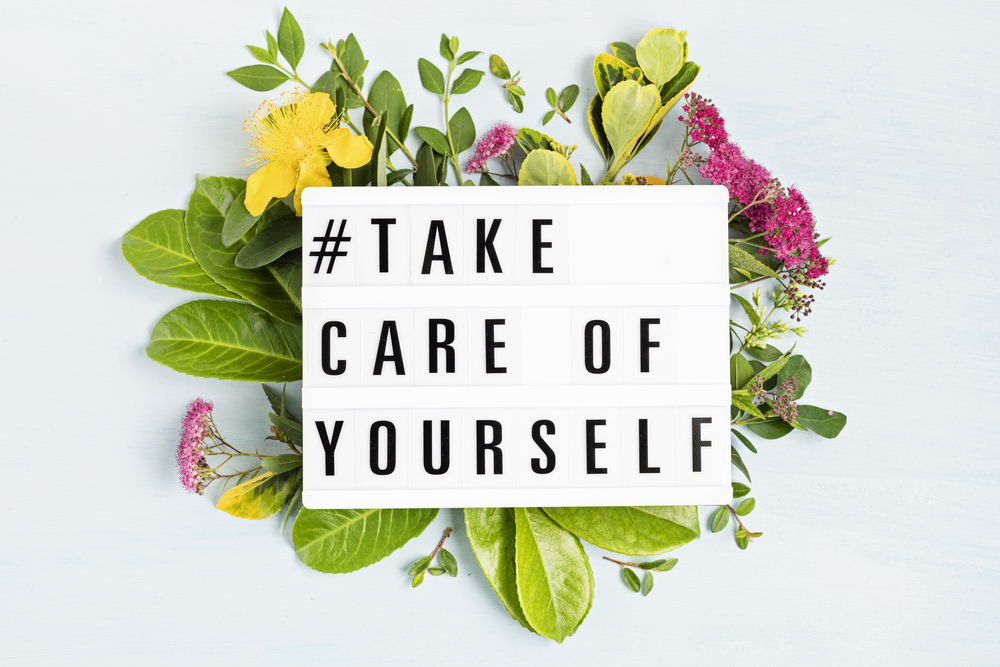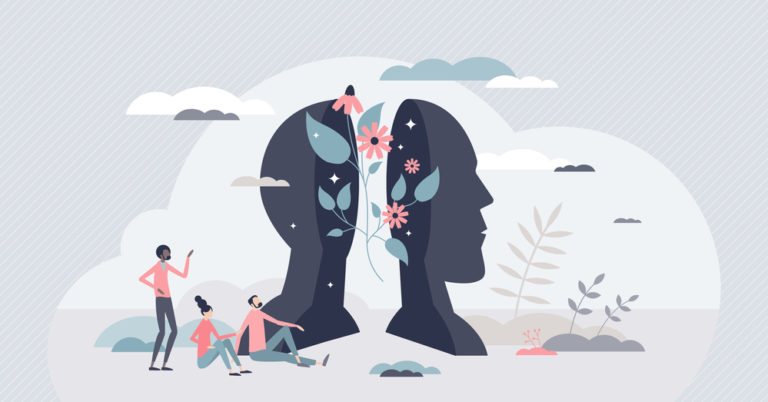At Clinic Les Alpes, we understand that mental health challenges can affect anyone. Our specialized psychiatric care programs are designed to provide comprehensive support in a serene and luxurious environment.
Whether you're experiencing a mental health crisis, struggling with depression, anxiety, or other mental health issues, our dedicated healthcare team is here to help you on your journey toward recovery and wellness.

Our adult inpatient mental health services are tailored to address your unique needs and circumstances. We believe that effective treatment begins with understanding each individual's specific challenges, history, and goals. Our approach combines evidence-based therapies, innovative treatments, and holistic support to provide the highest level of care for mental health needs. This residential therapeutic environment offers both short-term and longer-term options depending on your specific situation.
When you arrive at our inpatient mental health facilities, you'll undergo a thorough evaluation conducted by our multidisciplinary team. This assessment helps us understand:
Based on this evaluation, we develop a personalized treatment program that addresses your unique needs and supports your recovery journey.
Our inpatient program offers a structured, supportive environment where you can focus entirely on your recovery. The benefits of inpatient mental health treatment may include:
Our luxurious facility provides the perfect setting for healing, with stunning alpine views, comfortable accommodations, and amenities designed to support your comfort and recovery.

Our specialized programs for depression and other mood disorders combine evidence-based therapies with innovative approaches. Our treatment includes:
We work to stabilize acute symptoms while developing strategies for long-term management and recovery. Our healthcare professionals provide comprehensive care for even the most challenging cases.
For those struggling with anxiety disorders or trauma-related conditions, we offer specialized care focusing on:
Our supportive environment provides a safe space to address and process difficult experiences while developing healthier responses to anxiety triggers.
Many individuals experience both mental health challenges and substance use disorders simultaneously. Our integrated approach addresses both conditions concurrently, recognizing their interconnected nature. Our dual diagnosis program includes:
By treating both conditions together, we provide a more effective path to comprehensive recovery.

Our residential facility offers:
Our treatment team includes:
This diverse team works together to provide thoroughly coordinated care addressing all aspects of your wellbeing.
No two individuals are alike, and neither are their mental health needs. We develop highly personalized treatment plans that:
Our streamlined admission process is designed to be as stress-free as possible. Our admissions team will:
During your stay, you'll engage in a structured program that includes:
This balanced schedule provides intensive treatment while allowing time for integration and personal growth. Our therapeutic approach may include various modalities tailored to your specific needs.
We understand that recovery continues beyond your time at Clinic les alpes. Our thorough discharge planning includes:

Making the decision to seek inpatient care for mental health issues is a courageous step toward healing and improved wellbeing. At Clinic les alpes, we're committed to providing the highest level of care in a compassionate, supportive environment.
If you or a loved one is struggling with mental health challenges, we invite you to contact us for a confidential consultation. Our admissions team is available to answer your questions, address your concerns, and help you determine if our program is right for you.
Don't wait to begin your journey toward mental wellness. Contact Clinic les alpes today to learn more about how we provide comprehensive mental health treatment programs and how we can support your recovery.
All treatment and recovery programmes aim to restore and, if possible, improve the level of well-being that has been disrupted by an ailment and its particular symptoms. However, proactively nurturing, protecting, and enhancing your emotional wellbeing may help prevent the onset of a variety of conditions in the first place, or, at least, lessen their impact. But what is involved in wellbeing; a term that can seem rather nebulous?
The first thing to say is that wellbeing encompasses the quality of physical and mental health, with some people with a truly holistic approach, preferring to add the ingredients of spiritual and social health to the mix. It must be borne in mind that the same well-being system mediates both physical and mental health; the one directly affecting the other. This is why, when either healing or preventing mental and physical illness, we need to look after our whole well-being system and the environment in which we live. It is also important to remember that healing your mental and emotional wellbeing doesn’t just happen spontaneously. A certain amount of conscious effort is required; unless you are lucky enough to be someone to whom healthy living comes entirely naturally and without thought.
Taking a holistic approach also means paying attention to the parts that make up the whole system. This means taking into consideration physical well-being, emotional well-being, mental wellbeing, and social well-being.

For physical health, remember that our bodies need food and drink of all kinds and in amounts that encourage vitality and strengthen immunity. We need to take some sort of fairly vigorous exercise on a regular basis for similar reasons. Being physically active should be a normal part of everyday life. Physical fitness is also known to improve mood, mental wellbeing, and general outlook on life, as well as raising self-esteem.
Social connection is similarly beneficial to general health and emotional wellbeing. Isolation can lead to a variety of problems. Spending time with other people affords a sense of belonging and self-worth while providing opportunities to give and receive support. Small and larger acts of kindness and generosity to others have a positive mental wellbeing impact on all concerned. Furthermore, it helps develop a sense of purpose, which in turn brings its own reward. Expressing gratitude for kindness received is also likely to enhance wellbeing.
An active mind is as important as an active body. In that context, learning has been found to have benefits that include improvements to wellbeing as a whole. Consequently, to increase mental wellbeing, people are encouraged to take up a new interest or skill or rediscover one that has fallen into disuse. Such initiatives also offer the possibility of social connection through shared interest while boosting confidence.
Critical to a person’s wellbeing is how they respond to stress in its varying forms and degrees of intensity. Some responses aimed at stress reduction or pain management, for instance, such as the use of alcohol and drugs, often only make things worse for mental wellbeing, either in the short or long term, or both.
Restoring wellbeing and, wherever possible, improving it, is best achieved by both a condition-specific and a holistic approach to promoting mental wellbeing and sustaining recovery.
Everyone will have experienced a degree of anxiety at some time, perhaps in the mild form of worry, apprehension, or nervousness, while some will know what it is like to feel the kind of extreme anxiety known as panic. We use the term “panic attack” to convey the particularly unpleasant sensations associated with an acute episode of intense anxiety that comes seemingly without warning. From time to time people may also have experienced a sense of dread or doom where positive emotions are nowhere to be found, without always knowing why. For many, these emotional experiences are transitory. For others, they may become severe and persistent to the point where they may be described as chronic and attract the diagnosis of an Anxiety Disorder. This is when anxiety has become so debilitating it interferes with the normal course of life and recovery therapy may be required.
Anxiety is not the same as fear, which is a normal response to a real, present threat and passes as the threat dissipates. Anxiety has an anticipatory quality to it which may be a mindset imprinted by previous adverse, sometimes traumatic, experiences. Viewed purely in terms of a current context, this state of mind can seem irrational. Severe anxiety is frequently accompanied by restlessness, insomnia, irritability, ill-being, fatigue, and fruitless rumination that can affect physical health. People may also simultaneously experience physical discomfort in the form of tension that may bring with it muscle soreness and a variety of aches and pains. Palms may sweat and hands shake.

Anxiety disorders tend to encompass Generalized Anxiety Disorder on the one hand and on the other anxiety that has a particular focus, such in the case of phobias (claustrophobia, mysophobia/germophobia, arachnophobia, etc.), of which there is any number. Some phobias can place significant limits on a person, Social Phobia is a case in point, as interaction with other people is integral to achieving well-being. In the grip of severe anxiety, some people will avoid human contact, partly out of a worry of what could happen that might be beyond their control. There is also Obsessive Compulsive Disorder, where obsessive, anxiety-based thoughts result in compulsively repetitive behaviour to relieve the anxiety, such as hand washing to avoid germs.
Anxiety disorders may coexist with and relate to other psychological disorders such as depression, burnout, or physical conditions; especially those that pose a significant threat to well-being, to personal capacity, and even to life itself. Anxiety is also a characteristic feature of addiction. Many addictions originate in attempts to alleviate, escape or control anxiety in a process often referred to as self-medication. Paradoxically, all addictions tend to provoke anxiety and decrease mental well-being, given the loss of control that generally defines them. Furthermore, some addictive substances actually stimulate anxiety.
Treatment of anxiety will begin with a careful assessment of the anxiety suffered, including its form, severity, onset, and history, as well as current circumstances, including any complicating or aggravating factors such as other illnesses or lifestyles. Options, which are applied as appropriate, include, either singly or in combination: psychotherapy (particularly Cognitive Behavioural Therapy), medication, mindfulness, guided relaxation, and mutual aid. Other complementary therapies such as equine-assisted psychotherapy, massage, and some forms of exercise may be also called upon to enhance physiological well-being.
Symptom relief may take time, and as in all psychotherapy, personal commitment is required. Medication may play an important part in temporarily reducing levels of anxiety if it has come to interfere with normal function and physical activity. The good news is that alleviation of anxiety-related problems is achievable.
Everyone will feel down from time to time and lack positive emotions, but for some people, a low mood will weigh so heavily on them and persist well beyond a short period that ordinary day-to-day life can come to seem impossible. As this suggests, depression can range in degree from mild, to moderate to severe, at which point a clinical depression requiring treatment may be diagnosed.
Although both are a threat to one’s well-being, depression is not the same as sadness or grief, especially if these are clearly an appropriate response to a life event such as bereavement. Major losses, however, can trigger depression, as can illness, injury, and other major stressors in life.

There are a number of symptoms that may in some combination signal serious depression. These include psychological, physical, and social symptoms. Not everyone will experience depression in exactly the same way.
Some depressions may be understood as being linked to particular circumstances, such as with Post-Natal Depression Seasonal Affective Disorder, or low economic well-being. The condition may also be a feature of Bipolar Disorder.
Depression often features in addictions and may be revealed as an underlying factor in the onset of an addiction, which may have begun partly through attempts to self-medicate or find behavioural ways to alleviate a persistently low mood and psychological well-being. Some substances, such as alcohol or benzodiazepines are depressant in nature, while others, such as cocaine, may induce a crash in mood as a rebound from the high they produce. Behaviours like gambling may initiate a similar pattern.
Treatment for depression will naturally depend upon the severity of the condition. In the case of mild depression, time will often see the symptoms fade. For depression in the mild to moderate range, exercise is increasingly recommended, though it is important to find a form that suits the individual and to avoid slipping into an obsessive approach. Group exercise can be helpful as it adds a social dimension, reducing any symptomatic tendency to isolate. Self-help groups can be similarly useful as can workbooks (either in print or online). Mindfulness has also been found to help in many cases.
For people unfortunate enough to suffer from moderate to severe depression, Cognitive Behavioural Therapy (CBT) or specialist counseling is a generally preferred option but prescribed medication in the form of anti-depressants may also be called for. This so-called Combination Therapy is likely to be the most effective response to severe depression. While CBT is the talking therapy most supported by evidence, some people may prefer to engage with an interpersonal or psychodynamic model.
Because so much negativity surrounds depression, given its very nature, it is easy to lose sight of the fact that with the right treatment and emotional support, most people do recover from depression.
All trauma is, by its very nature, extremely stressful and affects overall wellbeing. Trauma delivers an overwhelming shock to the system, making it next to impossible to make sense of and integrate the experience at the time. Even if the person is able to shut off its impact (called emotional numbing) to avoid the feelings it produced, for many this will be temporary. However, it is important to remember that people experience and react to trauma in different ways and treatment must respond accordingly.
PTSD may be the result of recent trauma but it may also be a consequence of traumatic events at any time, including in childhood. Personality development and an individual’s whole approach to life may be shaped by the effects of early-life trauma, impacting their wellbeing. For many people, recovery from addictions and/or mental illness will necessitate resolving the lifelong reverberations of traumatic experiences. Among these may have been major social disruption, bereavement, neglect, violence, and sexual or other forms of abuse; often repeated many times.

Symptoms do not always appear immediately with their onset sometimes being delayed for months or years.
Flashbacks
Intrusive and vivid recall of traumatic events and situations; often triggered by associations. Such memories are not detached recollections but are experienced as if the person is there, back in the traumatizing moment completely, with all its attendant images, feelings, and sensations.
Sleep disturbance:
Restful sleep may prove elusive. Insomnia may be caused by anxiety that keeps people in a vigilant state, making their minds work overtime. Powerful nightmares are common.
Volatile mood:
Sufferers may be “on edge” and easily provoked into reacting with irritation or intense anger. They may have a tendency to break down in tears and feel either both anxious or depressed. Repetitive rumination is common as a person tries to come to terms with the experience, often turning on themselves with feelings of shame and guilt deriving from the loss of control.
Disruption of the thought process:
Sufferers may have difficulty concentrating or maintaining clarity of thought. They may become dissociated or “spaced out” and seemingly somewhere else. The memory may be impaired.
Physical distress:
The residual sensory distress of trauma is often experienced in the body, including the suffering of tension, soreness, aches (such as headaches), and pains. A person may experience sweats and/or nausea, dizziness, and trembling.
Maladaptive coping behaviours:
Substance abuse and/or other potentially addictive behaviours often develop. Social detachment may occur, including withdrawal from interests and once enjoyed activities.
Treatment can only begin following thorough assessment of the individual’s history and current situation. In some instances, close and careful watching is required to see if symptoms fade or intensify. If treatment is required, the interventions specifically recommended for sufferers of PTSD include Cognitive Behavioural Therapy (CBT), Eye Movement and Desensitisation and Reprocessing (EMDR) and Group Therapy, which counters isolation by helping people identify with and draw support from the particular understanding of fellow sufferers. Complementary therapies may also help. Medication and clinical psychology are sometimes called for to relieve symptoms of clinical depression and/or anxiety, although the risk of side effects has to be taken into account. In all treatment contexts, patients’ physical and emotional safety is paramount.
A resolution will be possible for some while others will find ways to live with the condition, learning in the process to minimize its impact and thereby greatly improving their quality of life.
Because the word stress has negative connotations given the effect it has when it becomes excessive (i.e., distress), it is easy to forget that stress is essential to life satisfaction and enhanced well-being. We would not grow physically, mentally, or emotionally without having challenges to which to respond.
For instance, if you want to increase the strength of a muscle you must put it under stress. However, if you work it too hard over too short a period of time you may cause the muscle to break down. It is all a question of balance.

The dynamic balance we need to maintain is the one between the demands we place upon ourselves — or allow to be placed on us — and our overall well-being to cope with them. Problems arise when demands are excessive in relation to our level of fitness or capacity to cope with them. When well-being, which must take into account the health and resilience of both physical and psychological resources, is impaired, extra weight and power is added to the demands. Under these circumstances, a variety of problems can arise that are a signal of the system in distress. Well-being as a whole may be placed under significant threat.
The source of stress at the present moment may be internal, external, or both; one working on and with the other. We are all, to some extent, driven by internal demands. These may be an internalized version of demands placed by adults upon us as we were growing up; sometimes in the form of expectations about what we should be or not be; what we should put up with; how we should behave or perform. Or we may have internalized a world that once required us to be in a permanent state of alert.
These may determine our subjective well-being and the way we approach life, which could have the effect of making us more prone to suffer from stress-related problems when we encounter the world of external demands. A perfectionist, an over-achiever, an obsessively compulsive, or an anxiously controlling person would be only four such examples. Sometimes we place ourselves in circumstances that recreate highly stressful situations, probably in the unconscious hope of achieving a better outcome. It is usually in vain and the consequences are sometimes damaging.
Anxiety and tension generally feature in stress-related problems and depression are also common. Finding relief from these states becomes a chronic, agitated concern and may initiate a range of responses. These often include resorting to behaviours that exacerbate the problem by counter-productively bringing additional stressors with them. While turning to drink and drugs may appear to alleviate stress-based conditions in the short-term, it can lead, through repetition and excess, to dependence and addiction. This places a whole new set of demands on the system and further reduces its fitness and capacity to cope. The same is true of other behaviours with addictive potentials, such as the use of pornography, gambling, shopping, gaming, compulsive eating or exercise, and so on. As part of a severe anxiety disorder or depression, individuals may deliberately self-harm.
A thorough assessment will review the current balance between levels of fitness and the types and intensity of the demands under which the individual is attempting to live. The person’s ways of responding to distress will be similarly assessed. Stress management, holistic health promotion, and treatment plan can then be developed, tried, and evaluated.
The abbreviation OCD (for Obsessive Compulsive Disorder) is sometimes rather carelessly used in colloquial speech as in, “I’m a bit OCD”. Such trivialization can serve to prevent recognition of the serious problem that the disorder proves to be for the many sufferers. In the most severe cases, it can become a significant impediment to normal functioning and be very distressing. It can affect women, men, and children, with puberty often the time of the first onset.
Obsessive Compulsive Disorder is most easily understood by looking individually at the two parts of the term. OCD refers to the combination of obsessive thinking and compulsive behaviour. An obsessive thought is one that, although unwanted, seems impossible to prevent or let go of. It keeps returning intrusively, sometimes accompanied by images or urges which provoke anxiety and often with feelings of shame and disgust. A compulsion is a behaviour or mental process that someone feels they must perform or undertake to relieve the anxiety that accompanies the thoughts.
Obsessive thoughts commonly include the fear of acting on impulses to harm self or others. A similar fear of causing such harm inadvertently might include, for instance, leaving a gas cooker lit, which could result in a house fire or the risk of being burgled by not locking up sufficiently well. It could be a fear of contamination by germs or substances or of asymmetry and disorder, even in quite minor matters. In effect, there is some element of an underlying fear of loss of control linking all these manifestations of OCD.
Common compulsive behaviours include:
Most people with such behaviours may be fully aware that their compulsive behaviour is irrational and has no objective logic to it but they nonetheless feel compelled to carry on for fear of what would happen if they didn’t.
While improvements are possible in cases of mild, moderate, and even severe Obsessive Compulsive Disorder, there is certainly no quick fix at the present moment. For most people, Cognitive Behavioural Therapy (CBT) is likely to be the most promising intervention. Sufferers learn to understand the fear-based processes underlying their OCD and acquire new ways to deal with it rather than resorting reflexively to compulsive behaviour. For more severe cases, symptom reduction is likely to be gradual so it is important to have realistic expectations while remaining optimistic. In severely debilitating cases, medication will be required in conjunction with so-called talking therapies. OCD support and mutual-aid groups can also provide important encouragement.